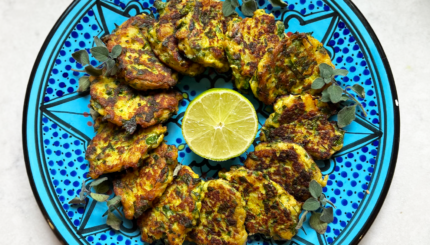Every year for Passover my mom makes too much haroset. Not only do we have enough to fill its place on the seder plate for the first two nights, but the Tupperware filled with haroset that lives in my parents’ fridge throughout Passover becomes like Strega Nona’s pot of pasta. No matter how much of the dried date-and-nut mixture we consume, it seems that the Tupperware is always full. And I wouldn’t have it any other way. Invariably, by the end of the holiday my sister and I end up finishing off the haroset by taking turns dipping spoonfuls of the fake mortar directly from the tub into our mouths.
It is with this adoration that I must now come to haroset’s defense.
A few weeks ago, the global food guide TravelAtlas posted a list of the 100 worst-rated foods in 2023 to their Instagram. Perhaps understandably, Iceland’s Hákarl (fermented shark) claimed the top spot of shame, with the U.S.’s ramen burger and Israel’s Yerushalmi kugel coming in second and third, respectively. But if you skim a little further down on the list you’ll see that haroset (listed as an Israeli food) is the 53rd worst-rated dish in the world.
You’re telling me that haroset is more disliked than England’s jellied eels (#64)?! I refuse to believe it. In fact, I rebuke it. TasteAtlas, here’s why you’re wrong about haroset:
The Nosher celebrates the traditions and recipes that have brought Jews together for centuries. Donate today to keep The Nosher's stories and recipes accessible to all.
First, haroset is not an Israeli dish. While Israel was established in 1948, one of the earliest mentions of haroset dates back to the Mishnah, which was written in the third century CE. Describing items on the seder plate, the sages listed, “unleavened bread and lettuce and haroset, even though the haroset is not a commandment.” There is some debate as to exactly when and where haroset originated – some claim haroset was inspired by ancient Greek symposiums where men consumed wine dipped in a mixture of fruit and nuts, and others say haroset came from ancient Babylonia (present-day Iraq, and parts of Syrian and Iran). Either way, haroset is a diasporic Jewish food, not an Israeli one.
Which leads me to my second point: As a food that blossomed across the vast Jewish diaspora, haroset more aptly describes a category of Jewish dishes than one specific recipe. For TasteAtlas to include haroset on this list would be like saying that soup is the worst dish of 2023. What kind of soup are you talking about? Italian wedding? French onion? Campbell’s chicken noodle? In terms of haroset, Ashkenazi Jews chop up apples and walnuts and mix them with sweet red wine, cinnamon and honey. Haroset from Egypt is made by cooking chopped dates, yellow raisins and wine on low heat until it becomes paste-like and then the whole thing is sprinkled with chopped walnuts. Italian haroset is similar, but with prunes, pine nuts, ginger, apples and pears added. (Though a kind of haroset from the Piedmont region of Italy contains boiled chestnuts, sugar, wine, egg yolks, orange zest and orange juice.) The haroset recipe of Yemenite Jews contains blended apples, wine, dates, walnuts, cinnamon, white raisins and the spice blend hawaij. Another style of Sephardi haroset requires rolling the blended mixture into balls. I could go on and on.
But even if TasteAtlas had specified a certain kind of haroset on their worst foods list, I would still defend the Passover dish. Because haroset is just plain delicious. It’s the perfect blend of spicy and sweet, smooth or chunky. It can constitute the perfect light nosh — or a full meal if you’re a fan of girl dinners. So, frankly, keep haroset’s name out of your mouth, TasteAtlas. I expect a full written apology to the Jewish people ASAP.



